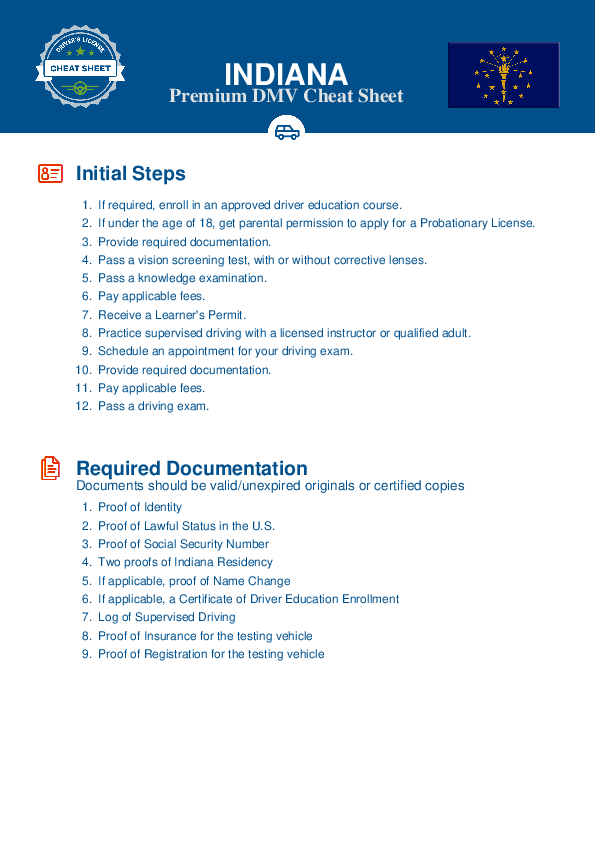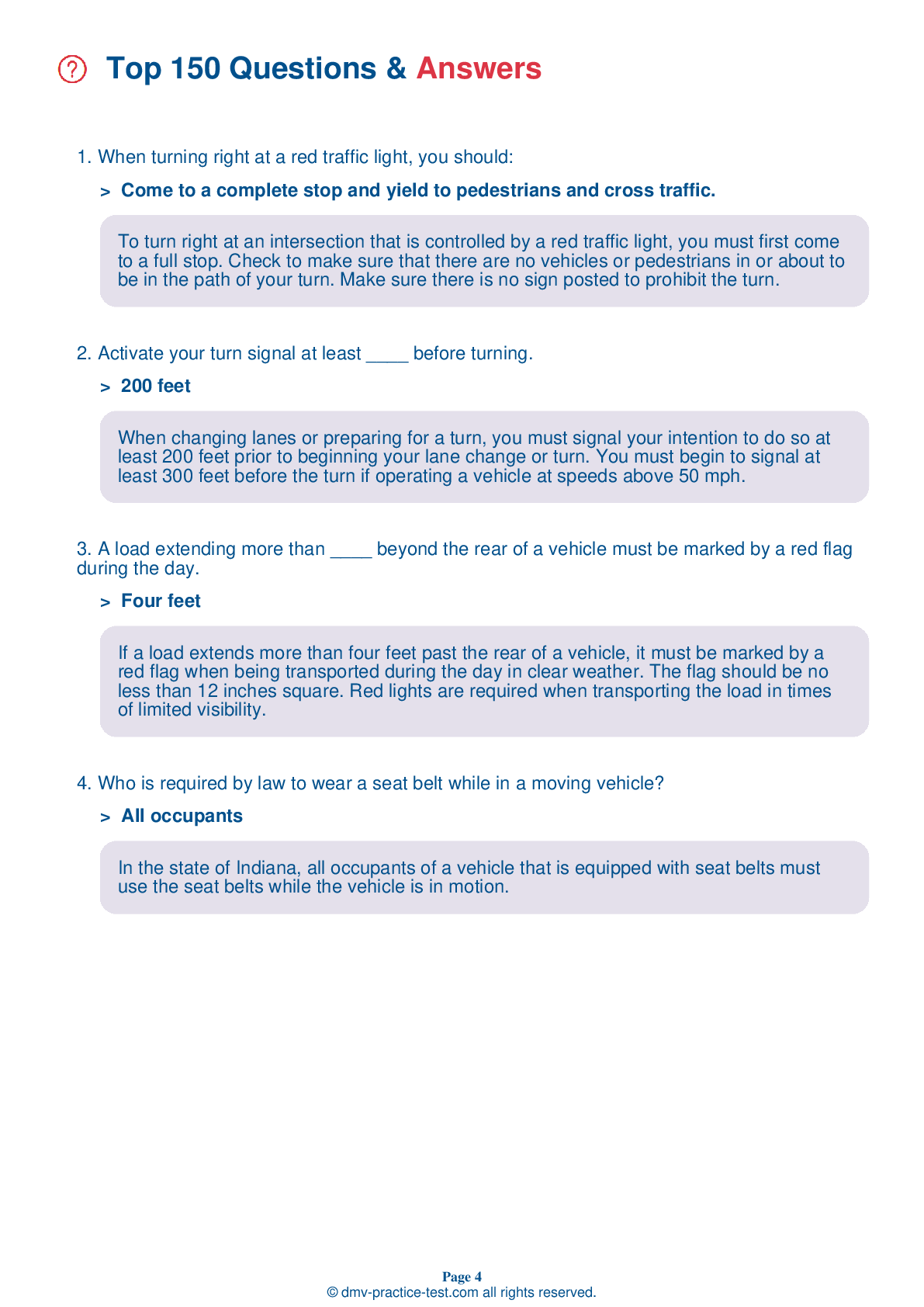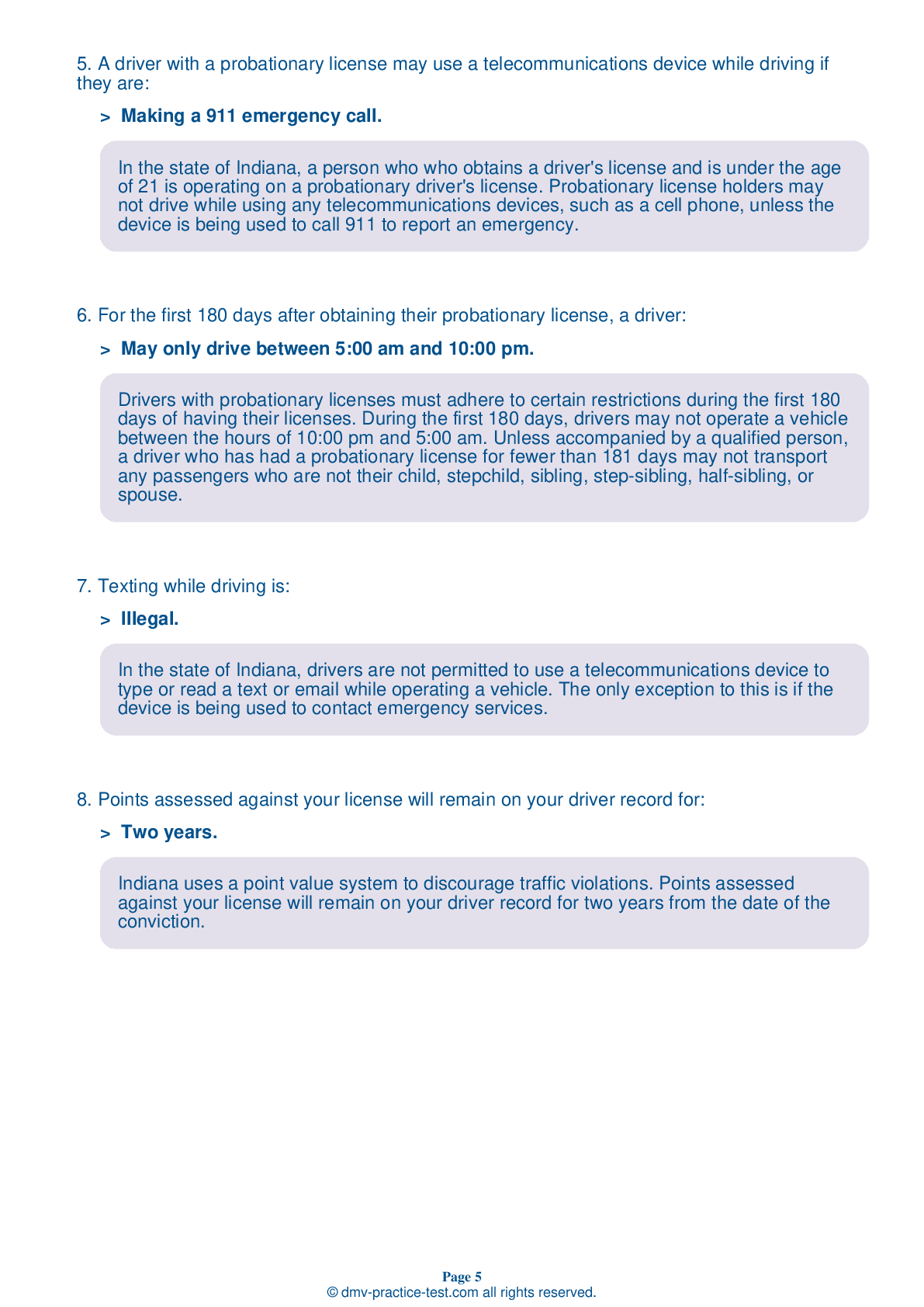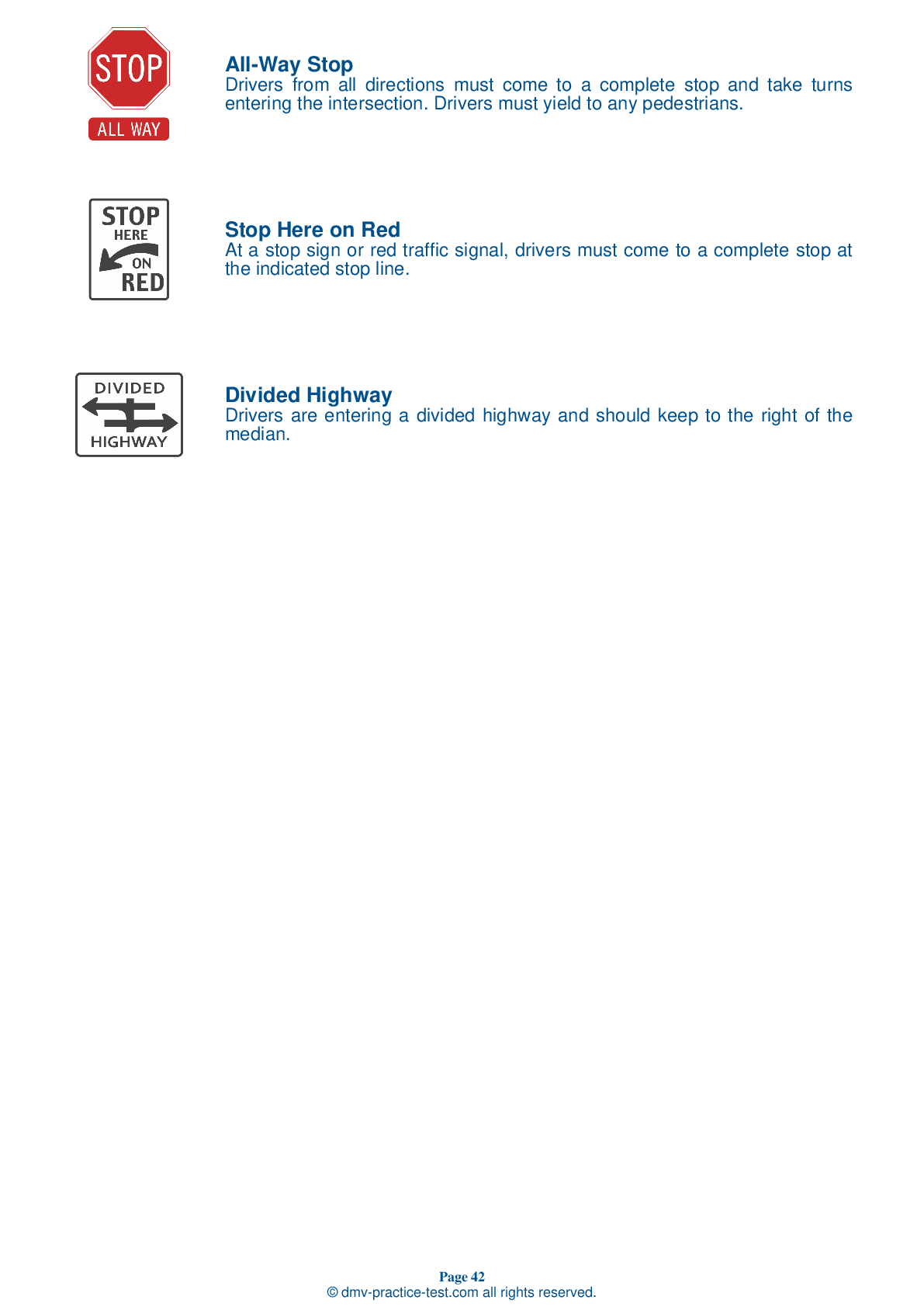FREE Indiana DMV Practice Test #10 Page 3 of 5
This set of Indiana DMV practise tests has been updated for January 2025. It includes questions based on the Indiana Driver Handbook's most significant traffic signals and laws for 2025. Use actual questions that are very similar (often identical!) to the DMV driving permit test and driver's licence exam to study for the DMV driving permit test and driver's licence exam.
On the practise exam, each question gets a tip and explanation to help you remember the concepts. The written component of the official Indiana DMV test will include questions about traffic rules, traffic signs, and driving statutes, as well as information from the Driver Handbook.
To obtain a passing grade, you must correctly answer 44 of the 50 questions. Take our DMV practise exam to help you prepare for your Indiana instruction permit or driver's licence.
The DMV exam is available in several languages.
Using any kind of testing assistance will result in an automatic fail, and the DMV may take additional action against your driver's licence, so stay away from it.
17 . The most effective thing you can do to reduce your risk of being injured or killed in a traffic crash is to:
Wearing your seat belt is the single most effective thing you can do to reduce your risk of death or injury while driving.
18 . The effect that alcohol has on your reflexes and judgment:
Consuming any type of alcohol can have negative effects on your reflexes and judgment. It does not matter which type of alcohol is consumed, only how much alcohol has entered a person's bloodstream.
19 . ____ limit your concentration, perception, judgment, and memory.
Even the smallest amount of alcohol will reduce your concentration, perception, judgment and memory, and your driving skills will suffer. No one can drink and drive safely.
20 . It is illegal for a person 21 years of age or older to drive with a minimum blood alcohol concentration (BAC) of:
For drivers age 21 or older, it is illegal to operate a motor vehicle with a blood alcohol concentration (BAC) of 0.08 percent or higher. Driving while under the influence of alcohol is not only illegal, but dangerous.
21 . Fog can greatly reduce the visibility of other vehicles, pedestrians, and traffic signals. When driving in fog, you should:
Fog can greatly reduce your ability to see other vehicles, pedestrians, and traffic signals. When driving in fog, drive cautiously and at reduced speeds. Do not use high beam headlights. Low beams better illuminate the road and objects ahead in foggy conditions.
22 . While driving, you come upon a sign displaying the words “Reduced speed, 35 mph." This means:
"Reduced speed" signs inform drivers that they must reduce their speeds. If a new speed limit is posted on one of these signs, the new speed limit begins at the sign.
23 . Which statement about speed is true?
As speed increases, the chance of a fatality increases. If you are moving faster than 80 miles per hour, you have almost no chance of living through a crash. Driving more slowly than other traffic can also be dangerous because other motorists may become impatient and make dangerous moves to pass you.
24 . This sign means:
Warning signs prepare drivers for upcoming road conditions and hazards and are usually yellow with black markings. This sign alerts drivers to potential bicycle cross traffic.
25 . The “No zone” is:
A truck or bus has blind spots on each side, in the rear, and in the front. An automobile cannot be seen in these blind spots. These blind spots are referred to as the “No zone.”
26 . It is important to be alert to motorcycles because:
Motorcycles are smaller and harder to see than cars. Because of their size, they are easily hidden in a car’s blind spot. It may be difficult to judge your distance to a motorcycle and difficult to tell how fast a motorcycle is moving, so always be alert and extra cautious when near a motorcyclist.
27 . Defensive driving is:
You drive defensively when you identify dangerous driving situations and take action before an accident occurs. Defensive driving helps prevent conflicts with aggressive, offensive, discourteous, careless, inattentive, impulsive, ignorant, or intoxicated drivers or pedestrians.
Need Car Insurance? No problem!
Compare the best rates in Indiana and find a personalized policy that meets your needs.
1. Are You Currently insured ?
2. Married ?
3. Do you own your Home?
4. Do you have more than 1 car ?
5. Have you or a Family Member Honorably Served in U.S. Military ?
6. Your Name
7. Age
8. Zip code
IMPORTANT REMINDER:Auto Insurance is Mandatory to drive in Indiana. Get covered before you hit the road to avoid any fines.
Ranked by best match
